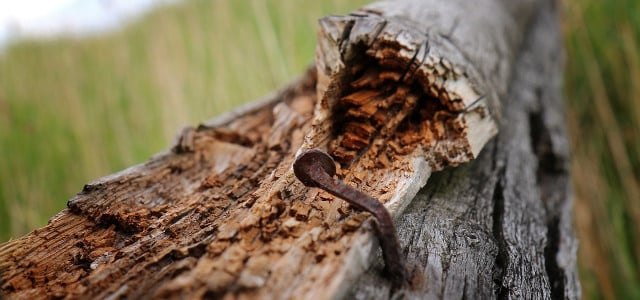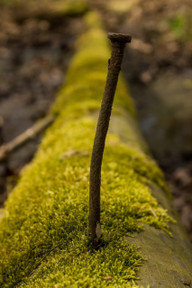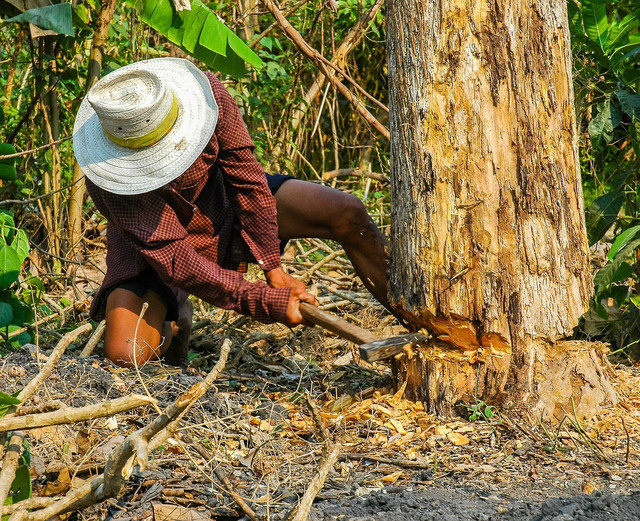
That a copper nail can kill trees is a myth that persists. We explain the truth behind the rumor and provide tips for sustainable tree management.
When a tree from the neighbor’s garden encroaches on one’s own property or a specimen in one’s own garden has grown too large, some property owners look for an easy way out: a hammered-in copper nail is supposed to make the tree die slowly but surely – without any further costs or observed tree protection regulations. But what’s the truth to this myth? What triggers a nail in the tree? Utopia clarifies.
Contents
Copper nail in the tree – does it kill it?
The theory is that a hammered copper nail kills a tree. This is based on the fact that copper is a heavy metal and can therefore become toxic to animals and plants under certain circumstances. Mollusks and fish in particular, as well as microorganisms such as bacteria and algae, can react sensitively to released copper ions. Snails, for example, can be kept from harvesting vegetables with a copper band. But can this also work for trees?
No, a copper nail cannot kill a tree. It only provides punctual damage that the tree can encapsulate and heal within a short period of time. Both the physical injury and the copper dose are too small for one or more hammered nails to endanger the tree. The same is true for other nails made of iron, brass, or lead. The only effect left by a copper nail: a slight brownish discoloration at the point of impact.
It doesn’t matter if it’s a conifer or a deciduous tree: You can’t kill a tree with a copper nail.

Kill tree: Is it really necessary?

Trees are an important part of the ecosystem. They absorb carbon dioxide and convert it into oxygen – a process that is not only essential for us humans to survive. Trees also play an important role in the environment in other contexts: they provide food for various animals, ensure healthy soil and provide habitats for plants and animals – to name just a few examples.
That’s why you should always consider whether you absolutely want to kill a tree. If the crown is too large, for example, it may be enough to prune the tree generously. If the offending tree is on the neighbor’s property, you may not remove the tree anyway. In this case, only a clarifying conversation with the neighbor will help.
But it may also be illegal to poison or kill a tree under other circumstances. The regulations depend on the tree protection statutes of the respective federal state. On your own property, you are in principle free to cut down trees or let them grow – unless it is a protected tree species.
Kill tree: alternatives to copper nail

If you definitely want to remove a tree on your property, a copper nail won’t do it. In principle, you have two effective methods:
cutting down the tree
ringing – a method used in forestry
When ringing, you cut a ten centimeter wide strip around the lower part of the tree trunk. With this strip you should remove the bark and some wood. As a result, the tree can no longer transport the tree sap from the roots to the crown – it gradually dies. The best time for ringing is between July and August.
The advantages of this method are that you do not need heavy machinery and birds and other animals are not bothered by noise. Also, unlike other methods, no chemicals are used that could harm the environment. The main disadvantage of ringing is time: it takes about one to three years for the tree to die completely.
If you decide to cut down the tree, you can then remove the stump or leave it standing: It provides valuable habitat for insects and co.

